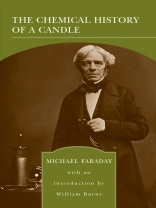Originally given as a lecture at the Royal Institution,
The Chemical History of a Candle is one of the most popular and widely distributed works of popular science ever written. A remarkably clear and beautifully organized explication of Victorian chemistry and physics, it has gone through myriad editions and translations and has been used to teach the scientific method in societies as different as the Soviet Union and modern Japan. It also provides a window into the mind and science of Michael Faraday, the greatest experimental physicist of the nineteenth century, and quite possibly of all time.
Om författaren
Michael Faraday (1791-1867) was one of the last great scientists to learn his trade through apprenticeship and self-teaching rather than formal higher education. Faraday was the first to deliberately produce an electrical current by manipulating a magnet, a process which underlies modern electrical generation. This was followed by a stream of discoveries extending over the next few decades, including the electro-optical effect and dimagnetism. Faradays work formed the experimental foundation of nineteenth-century field theory in physics.












